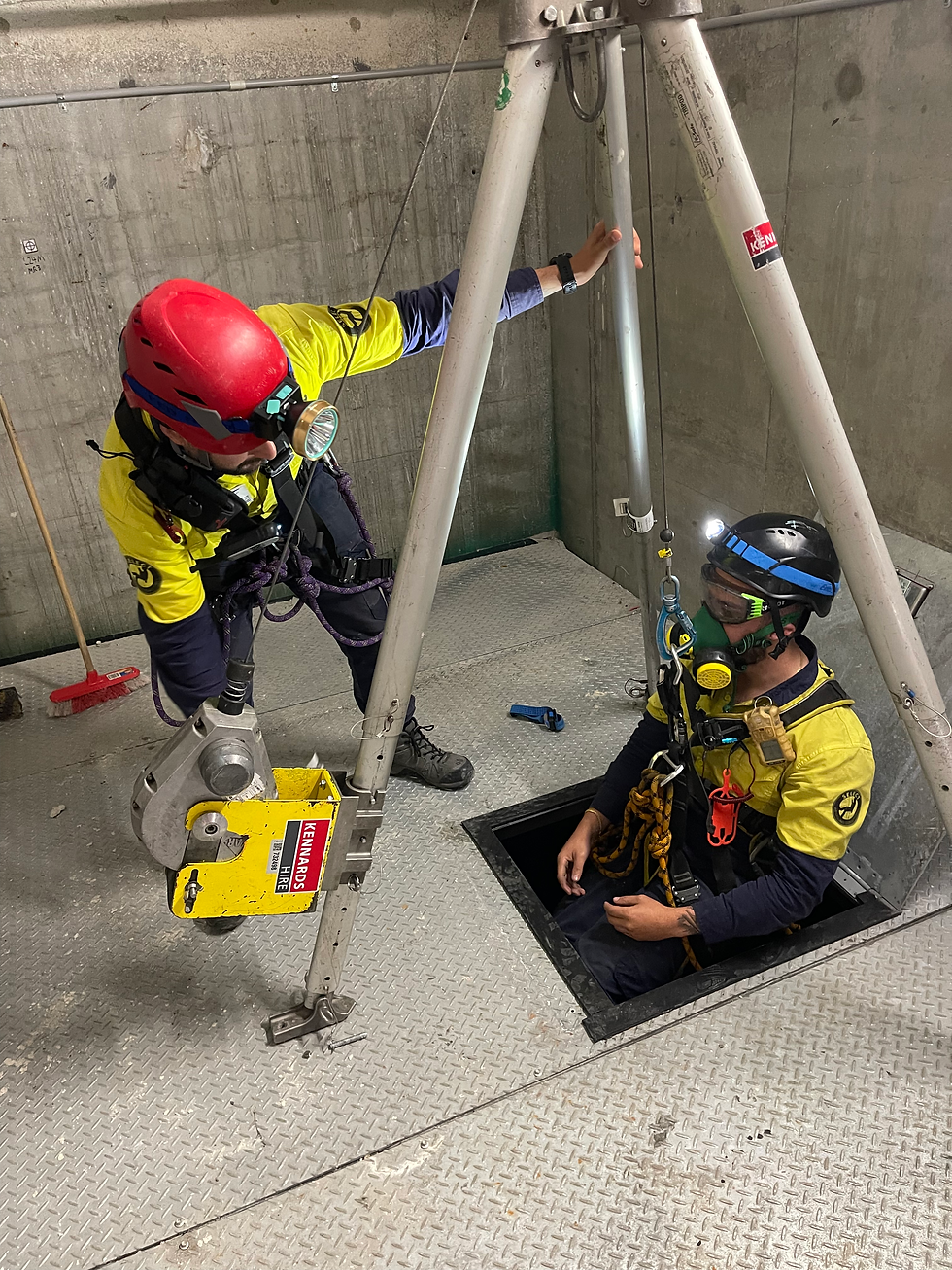In this guide, we explore the safety and techniques of rope access in confined spaces. As leaders in Australia, we share our expertise and solutions, helping organisations tackle the unique challenges of this field.
By understanding rope access in confined spaces, we ensure worker safety and keep productivity and efficiency high.
Key Takeaways
Gain a thorough understanding of rope access techniques for confined spaces
Learn about the essential safety protocols and equipment required for confined space entry
Discover effective strategies to mitigate risks and hazards in confined space environments
Explore best practices for efficient and safe rope access operations in confined spaces
Enhance your knowledge and skills to protect your workforce in confined space work better

Understanding Rope Access in Confined Spaces
Rope access is a key method for reaching and working in hard-to-get places, like confined spaces. It uses special gear, advanced techniques, and strict safety rules. This lets experts safely do jobs in tough spots.
What is Rope Access?
Rope access involves using ropes, harnesses, and special tools to reach hard-to-reach areas. Trained technicians use methods like rappelling and ascending to work safely in these spots.
Defining Confined Spaces
Confined spaces are difficult to access and can be dangerous. They are not designed for long-term use and require special training and safety measures. Examples include storage tanks and pipelines.
Knowing about rope access and confined spaces helps keep operations safe and efficient. It reduces risks to people and the environment.
Hazards and Risks in Confined Space Entry
Entering confined spaces is risky. These areas have special hazards and risks that need careful handling. Safety is crucial in these tight spots.
Space hazards come from many sources. Toxic gases like carbon monoxide or hydrogen sulphide can be deadly. Also, oxygen levels can drop, causing asphyxiation.
Confined spaces also pose physical dangers. People may get trapped or hit by falling objects, and the small entry and exit points make rescue difficult in emergencies.
Knowing the hazards is key to reducing confined space risks. Workers need proper training and the right gear, and following strict safety rules is also vital.
Oxygen-deficient atmospheres
Toxic gas accumulation
Entrapment and falling object hazards
Restricted access and egress points
"Entering a confined space without proper preparation and safety measures in place can have devastating consequences. Prioritising the identification and management of these hazards is the key to ensuring a safe and successful confined space entry."
We protect our workers by understanding and tackling confined space hazards and risks. This way, we avoid serious accidents.
Rope Access Confined Space: Safety Protocols
It is crucial to keep rope access technicians safe in confined spaces. We have strict safety rules, which cover the right equipment and gear and how to enter safely.
Equipment and Gear
We need special tools to access ropes in tight spaces. This includes:
Harnesses, lanyards, and carabiners made for tight spaces
Respiratory gear like SCBA or supplied-air respirators
Gas detectors to check the air quality
Lighting and comms to see and talk clearly
We check and keep our gear in top shape, which ensures it works properly when we need it.
Entry Procedures
Our confined space entry procedures aim to keep risks low. They ensure our rope access team stays safe. These steps include:
Doing full risk checks to spot and fix dangers
Using strict rules to let people into the space
Watching the air and keeping it fresh
Training and testing everyone who goes in
Having clear plans for emergencies
Following these rope access confined space safety rules helps keep our team safe. It also helps us finish our jobs well.
Rope Access Techniques for Confined Spaces
Working in confined spaces requires special rope access techniques. We look at the main methods for safe climbing up and down. For rope access experts, it's key to have the right training and keep learning.
Ascent and Descent
It is vital to be able to climb up and down safely in tight spaces. We use special gear, such as descenders and ascenders, which keeps us in control and stable while moving vertically.
We always keep three points of contact with the rope. This ensures we can move safely between anchor points, and it's how we get through tough environments.
Keeping up with training and checks is crucial. It helps our team be ready for the challenges of confined spaces. We focus on safety and excellence. This keeps us leading in the industry, giving our clients reliable and efficient solutions.
FAQ
What is rope access and how is it used in confined spaces?
Rope access is a method for reaching hard-to-reach places, such as confined spaces. It uses special gear and techniques for safe work in these areas.
What are the key characteristics of confined spaces?
Confined spaces are areas that are difficult to access and often have bad air and dangers. It's important to manage these risks carefully.
What are the common hazards and risks associated with confined space entry?
Entering confined spaces can be dangerous. Workers might face low oxygen, get trapped, or breathe in harmful gases. Safety training and the right gear are key to avoiding these risks.
What equipment and gear is required for rope access in confined spaces?
Special gear is needed for rope access in confined spaces. This includes harnesses, lanyards, and gas detectors. Keeping this equipment in good shape is vital for safety.
What are the key entry procedures for rope access in confined spaces?
Safe entry into confined spaces involves checking the air, having a rescue plan, and wearing the right PPE. These steps help keep everyone safe.
What key techniques are for safe ascent and descent in rope access confined space operations?
Working in confined spaces requires special rope access skills, such as controlled descent and self-raising. Technicians must keep practising to stay safe.
Comments